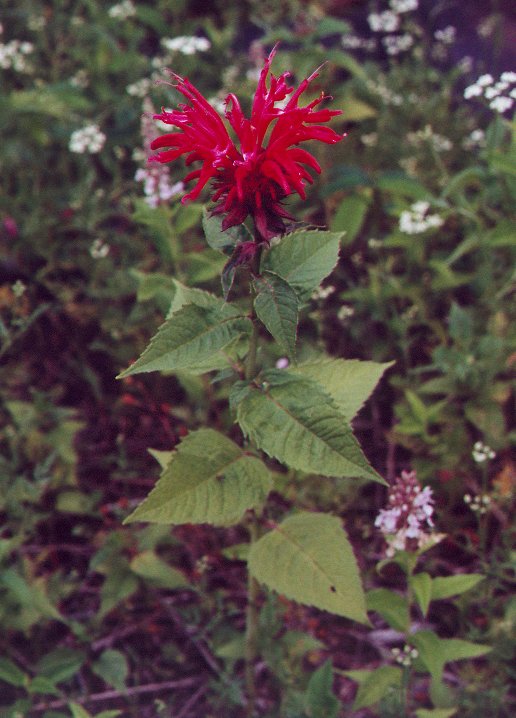Monarda didyma L.
Beebalm

Introduced
CC = *
CW = 3
MOC = 3
© DETenaglia
Monarda didyma L.Beebalm | |
 |
Introduced CC = * CW = 3 MOC = 3 |
© DETenaglia |
|
Family - Lamiaceae Stems - To 150cm tall, 4-angled, glabrous below, pubescent above, herbaceous, branching above or simple, fragrant. Leaves - Opposite, to 15cm long, 5cm broad, serrate, lanceolate to ovate, acute to acuminate, with short petioles or sessile, glabrous or sparsely pubescent above, with spreading hairs below, fragrant. Inflorescence - Terminal cluster of +/-30 flowers. Cluster subtended by foliaceous red bracts. Flowers - Corolla scarlet, to 4cm long, bilabiate, pubescent. Lower lip larger than upper and weekly 3-lobed. Stamens 2, exserted. Style exserted. Stigma 2-lobed (unequally so). Calyx tubular, with +/-15 ridges (nerves), 5-lobed. Lobes acute to acuminate.
Flowering - June - August. Habitat - Cultivated, rarely escaped to moist soils. Origin - Native to northeastern U.S. Other info. - This is a very striking species of Monarda. Like most of the other deep red flowers, it is very popular with butterfly gardeners. The plant is very fragrant and the leaves can be used to flavor beverages. Photographs taken at the Kansas City Zoo, 6-22-00. |